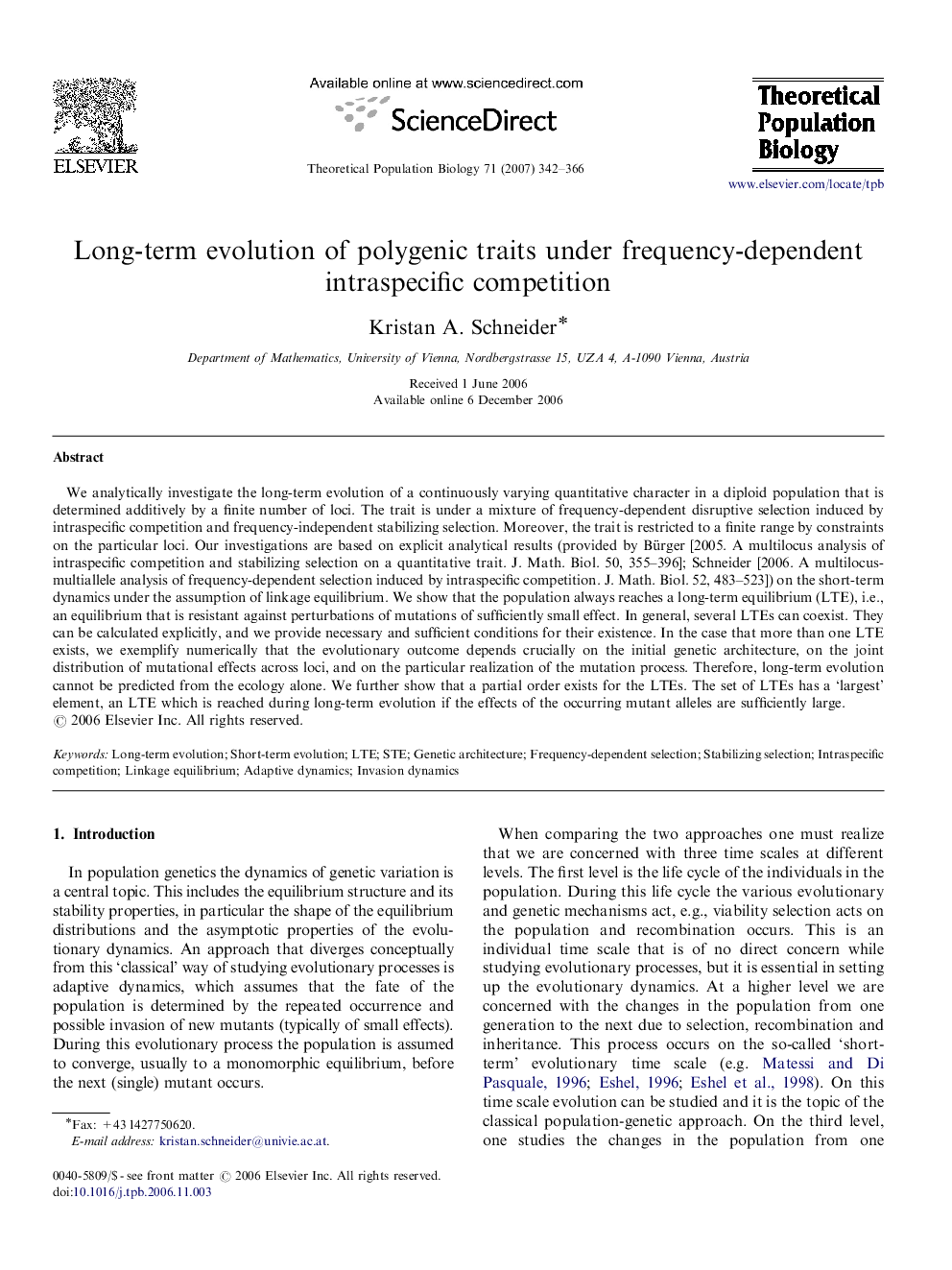| کد مقاله | کد نشریه | سال انتشار | مقاله انگلیسی | نسخه تمام متن |
|---|---|---|---|---|
| 4502763 | 1320598 | 2007 | 25 صفحه PDF | دانلود رایگان |

We analytically investigate the long-term evolution of a continuously varying quantitative character in a diploid population that is determined additively by a finite number of loci. The trait is under a mixture of frequency-dependent disruptive selection induced by intraspecific competition and frequency-independent stabilizing selection. Moreover, the trait is restricted to a finite range by constraints on the particular loci. Our investigations are based on explicit analytical results (provided by Bürger [2005. A multilocus analysis of intraspecific competition and stabilizing selection on a quantitative trait. J. Math. Biol. 50, 355–396]; Schneider [2006. A multilocus-multiallele analysis of frequency-dependent selection induced by intraspecific competition. J. Math. Biol. 52, 483–523]) on the short-term dynamics under the assumption of linkage equilibrium. We show that the population always reaches a long-term equilibrium (LTE), i.e., an equilibrium that is resistant against perturbations of mutations of sufficiently small effect. In general, several LTEs can coexist. They can be calculated explicitly, and we provide necessary and sufficient conditions for their existence. In the case that more than one LTE exists, we exemplify numerically that the evolutionary outcome depends crucially on the initial genetic architecture, on the joint distribution of mutational effects across loci, and on the particular realization of the mutation process. Therefore, long-term evolution cannot be predicted from the ecology alone. We further show that a partial order exists for the LTEs. The set of LTEs has a ‘largest’ element, an LTE which is reached during long-term evolution if the effects of the occurring mutant alleles are sufficiently large.
Journal: Theoretical Population Biology - Volume 71, Issue 3, May 2007, Pages 342–366